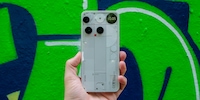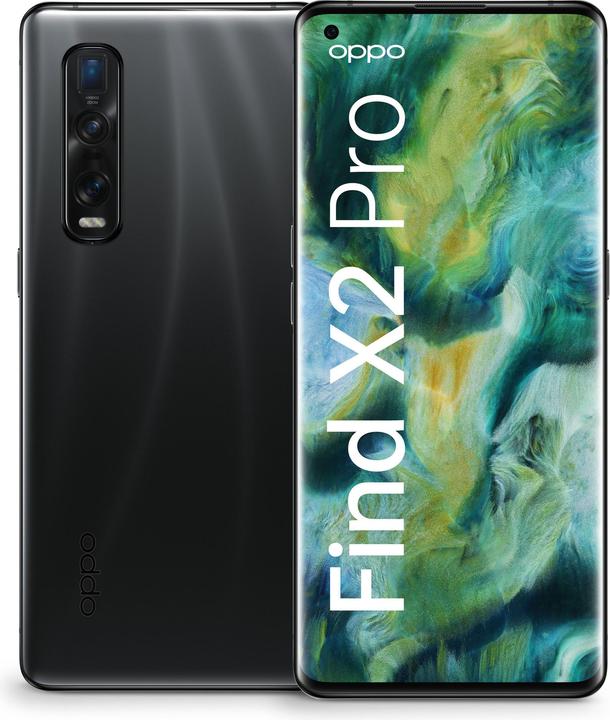
Reviewing the Oppo Find X2 Pro: a new Apex Predator enters the market
Chances are that the Oppo Find X2 Pro will become Phone of the Year for 2020. Almost definitely. And any phone of this high a standard deserves its very own puff piece.
Oppo may be a newcomer on the local market, but it’s a top brand in China. Leading in a highly competitive market is no accident. The Oppo Find X2 Pro proves this.
The Find X2 Pro isn't perfect, but it has one advantage over the competition and the only phone that could give it a fair fight: Google Services. Sure, the Oppo phone's camera doesn't quite deliver the performance of a Huawei P40 Pro or Huawei P40 Pro Plus, but thanks to a full dose of Android, Oppo has mass appeal.

Yeah, pretty sure this'll be Phone of the Year.
The little things
The Oppo Find X2 Pro has fit into my everyday life extremely quickly. At home, it's the phone I use to record all my videos. I use it to quickly watch a YouTube video. It's the phone I use to listen to music. The speakers are great, and it goes without saying that the 120 Hz display is too. By the way, the latter doesn't consume as much battery as expected from a screen delivering 120 frames per second.
But those 120 fps are kind of iffy. It's extremely difficult to justify why you'd need them. After all, the standard 60 Hz displays on all phones are good enough, right? So why fix something that isn't broken? What’s more, 120 fps don't improve videos that much either. This is because the screen you watch videos on is unlikely to be able to manage 120 frame refreshes per second anyway. Either that, or the camera used didn’t record at at 120 fps. Or YouTube can't display it. One or more of these aspects could cause you to shrug off all the hype around 120 hertz.
Still, the screen is the most important interactive element on any phone. You tap on it, read news and visit websites. A screen can determine the usability of your phone. Fortunately, I haven't come across a badly calibrated screen for a long time. All phones in all price ranges have beautiful screens built in. Therefore, the question remains: what use is 120 Hertz?
I suggest viewing a 120 Hertz screen in real life and fiddling around with it. The Oppo Find X2 Pro isn't the only phone who knows to use it. The Samsung Galaxy S20 can also achieve this if the settings are set correctly. Gamer phones such as the Asus ROG Phone as well. Animations feel softer, flow better, and the usage generally feels less mechanical. That's not just because the screen manages more pictures, but also because Oppo has optimised the software behind it.
And for the first time, Oppo really shows what the Find X2 Pro can achieve. We've finally reached a point where I'll have to revise a long-held opinion: Android OEM versions do indeed have a right to exist. Oppo's Color OS, version 7, simply makes Android better. You can adjust the animation speed, icon shapes on your home screen, dark mode, refresh rate and all sorts of other things that are lacking adaptability elsewhere.
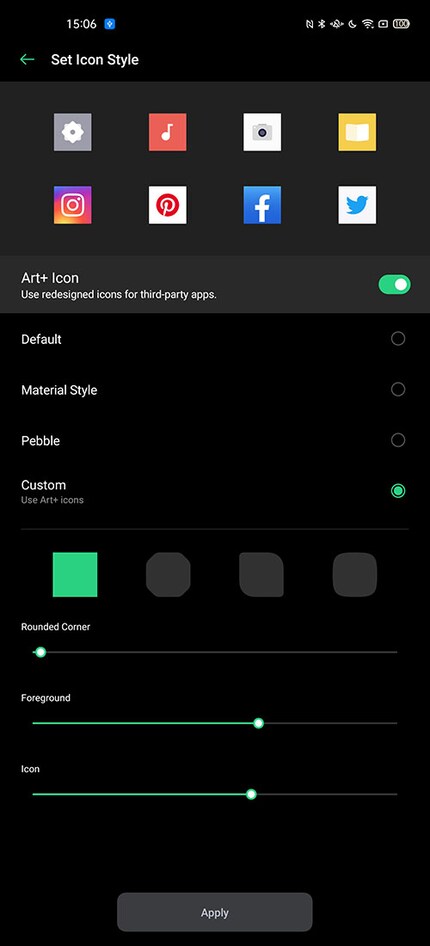
That's the way it's supposed to be. This is the way forward. Here and there you'll find small settings that make your phone just that little more personal. I don't like animations when apps are opening. This can be largely disabled. You like them? No problem, there's an option for that. Oppo gives you a lot of freedom in the design, and that's a good thing.
Two batteries for quick charging
When I record videos, every phone battery runs out quickly. Same goes for large cameras. There's hardly anything that eats up as much battery as a video recording. Smaller clips aren't the problem, but longer recordings demand a lot from a smartphone. The phone gets warm and the battery drains very quickly.
As a result, the industry is currently experimenting with charging technologies as only so much can be done with the battery itself. Lithium-ion batteries have reached the end of their technological development. There isn't much that can still be gained from them. Thanks to 7-nm architecture and software optimisations, even a relatively small battery with around 3500 mAh can absolutely be suitable for everyday use.
The problem Oppo and other manufacturers are addressing is that of reliability. If you shoot a longer video, you'll know that the battery will suffer. That's okay and acceptable. But if you have to take a break for a few hours after the battery has died, it can and will mess up your shoot. Therefore, the size of the battery isn't necessarily decisive, but the charging speed. Oppo's got the lead here. The 4260-mAh battery can be charged with 65 watts in about half an hour.
Heat is generated during a charging process. The lithium-ion battery expands. Not by much, but since every cubic millimetre of space in a phone is exploited as much as possible, even small changes in size can have major consequences. In the case of a battery, that would be a short circuit. This awakens flashbacks to the Note 7 and its tendency to explode. This should never be a problem with a well-designed battery, but there is a risk if a cable pumps massive charges into a lithium-ion battery without halt. The physically larger the battery, the greater the risk.
Oppo has solved the problem simply: the battery is actually two batteries. There isn't one 4260 mAh battery, but two serially connected batteries with 2130 mAh each.

This design is at the expense of wireless charging. That's pretty much the only thing the Oppo Find X2 can't do. It'd be cool if Oppo wireless charging and the double battery could co-exist. In my opinion, I'd rather have the double battery with its charging speed.
Of light grey skies and speeding signs
The camera's good. Very much so. But beware: it'll never be as good as the camera Huawei currently uses in the P40 series. The camera array on the back of the phone promises a lot and delivers:
- A 48 megapixel wide angle lens in front of a Sony IMX 689 sensor, f/1.7, Ultra Steady Video.
- A 48 megapixel ultra wide angle lens, Sony IMX 586, f/2.2, 120° field of view, macro capability.
- A 13 megapixel zoom lens in periscope design, f/3.0, 10x hybrid zoom, up to 60x digital zoom.
All cameras boast something called Ultra Night Mode. Here's what it looks like:
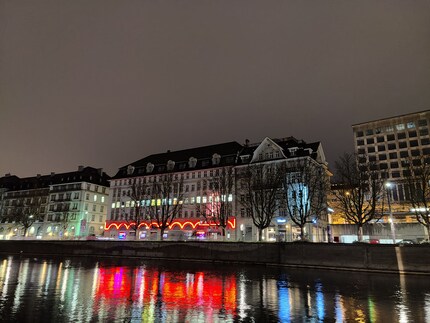
I don't have a problem with the technology itself. What I don't like is the aggressive blue night sky and the light grey of the road. My human eye perceives this scenery quite differently. Dark blue to black and dark grey. To me, pictures in Night Mode always look like those bad day for night shots from old movies. Movies back then had cameras that weren't yet bright enough to record at night. Filmmakers simply filmed during the day and put a blue filter over it. That never seemed real and never will.

Still, the Night Mode technology in smartphones is impressive. Can't argue with that. My problem with Night Mode is purely aesthetic, not technological.
What does «something with a wide-angle lens» even mean?
Like Huawei and Samsung, Oppo wants to show off the Find X2 Pro's video capabilities. They work. As mentioned before, it's been the phone I've been using for the past few months to record videos in my home studio. Therefore: yes, the videos are good. The picture anyway. The sound is hardly usable even in a quiet workshop, also known as my dining room. A Yeti Podcaster microphone is required.
Oppo boasts additional stabilisation. The image is already stabilised by default, but you can add on Ultra Steady Mode. This makes the picture even more stable. Let's test it out.
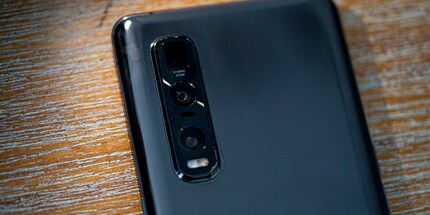
The test is set up by sticking a smartphone to my leather jacket with adhesive tape before jumping on my motorcycle with it. This isn't only because I'm on the road with my bike anyway, but also because this lets me push every system to its limits.
- Image stabilisation has a lot of work to do and has to calculate and react quickly, as stabilisation is designed for slower movements. Walking, for example, maybe a person filming a race. I'm not sure the developers ever thought about 80 km/h.
- The lighting is constantly changing.
- The microphone reaches the limits of calibration and has to deal with a loud engine and airflow as noise. The motor constantly changes in volume.
With the Find X2 Pro, I went one step further so that I could test Ultra Steady Mode. During a first ride, I aligned the camera so that no roadsides are visible. The camera must therefore rely either on optical image stabilisation or internal sensors and its own discretion.
The second run gives the camera two reference points at which stabilisation could take effect. There's the handlebars, which aren't only a dominant and permanent visual element, but also the roadside.
The microphone system must work independently of this. It has to deal with airflow, engine and other traffic noise. First and foremost: the Find X2 Pro loses this battle. It tries its best, filtering out the engine of my Harley, and sometimes even the wind. The result is about as clumsy as the sentence I used to describe the phenomenon.
Regular Steady Mode
By default, the Oppo Find X2 Pro stabilises video footage. But the Find X2 Pro features something called «Ultra Steady Mode». So I did the test twice.
As long as the road is visible at the bottom of the picture, the camera has an easy job. There are enough regular reference points that an AI's camera can understand and interpret. But as soon as the road is gone, the safety wheels are off and the camera tries to re-orient herself. Treetops don't provide a regular pattern and don't stay in the picture long enough to stabilise properly. This is where the Al stumbles. The bumps don't correspond to the wobbling in the picture. The wobble is much shorter, faster, but takes place approximately where the bumps are. This means that the camera does balance, but isn't quite so sure what to aim the image at.
But as soon as traffic signs or trees appear on both sides of the road, stabilisation is easy.
The focus is annoying when the handlebars are in frame. The AI thinks that I want to focus on the black metal bar, although I'd rather have it on the street. Then there's the fact that the depth of field for the road isn't always blurred, but is adjusted again and again. The handlebars lose their sharpness, and somehow nothing is sharp at all. What is the AI thinking?
Stabilising the image isn't the problem. The conclusion I was hoping for. Deciding between stabilising the handlebars or the road is easy and correct. But focus and stabilisation aren't the same thing and they don't speak to each other as it seems. Or they do and the focus system says «The foreground is what people want to see» while the stabilisation system says «The background is what needs to be stable» and in the end that's what comes out.
The adaptiveness to the lighting conditions is also remarkable. This can be done quickly, but if it's a little darker out, black quickly turns into grey, ugly and flat.


By the way, this also applies to recording in Ultra Steady Mode.
Ultra Steady Mode
According to informal exchanges with Oppo, the Ultra Steady Mode does «something with the wide-angle lens». Exciting, because manufacturers seldom provide exact details of how their stabilisation works. The competition never sleeps. Maybe «something with the wide-angle lens» is already enough information for Samsung or Huawei or Apple to learn something. The question here, in addition to stabilisation, is that of image quality. If the image comes mainly from the wide-angle lens, it will have a strong curvature towards the edge of the image and often slightly skewed colours.


Here the Find X2 Pro surprises me.
Neither colours nor stabilisation of the image are a big problem. Only rarely does the picture tremble, but when it does, it does so significantly. What's most exciting is this moment in the video. As I drive through the roundabout, a signpost comes up. From 01:51 to 01:54 in the video. My pace is constant or even decreasing. The signpost, however, doesn't only suddenly become more stable, but abruptly races out of the picture.
That means there's a lot more footage. The finished video is only a cut of what the camera records and the AI processes. That's the «something with the wide-angle lens» part.
Why the title?
I can already hear you typing. «Why not pick the P40 Pro for Phone of the Year?» Yeah, Huawei has the better camera. But the other Chinese company is missing something that simply belongs to Android in this country. Google Services. This completely destroys any shred of suitability for everyday use for the broad masses. The Oppo Find X2 Pro, on the other hand, does impressive things with its camera, but it's not a frontrunner. Nevertheless: you can unpack it, put it into operation and don't have to worry about it anymore.
Apart from its usability, Oppo makes a reasonable and solid suggestion on how to achieve the shortest possible charging time within the framework of lithium-ion technology. The solution may sound simple, but it takes creativity and a bit of cheek in hardware development to implement it broadly and ready for production.
Furthermore: Oppo wants to know how far they can go. The group is the largest manufacturer of mobile phones in China and is now expanding. They're aggressively entering Switzerland, having made a first attempt with the Reno 5G last year. And after corresponding first successes, they now want to make the Find X2 Pro the top dog. And it worked. If Oppo continues to provide such equipment, the big players will have to suit up for a clash of titans. Samsung is chugging along with a good-sounding but average and, above all, expensive flagship. Huawei has political troubles and other manufacturers either lack the know-how or the marketing budget to announce their flagships. Apple plays in its own market, they cannot and will not get involved in the Android battle.
In other words, the Swiss Android market has found a new predator in Oppo. The Find X2 Pro is a vicious animal at the top of the food chain. With good specs, the full Android package and the marketing budget of China's largest smartphone manufacturer – depending on the statistics and data source, it's either Oppo, Samsung or Huawei, but still – rough seas lie ahead for other manufacturers.
That’s all for today. By the way, did I mention that Oppo is encroaching on Huawei and collaborating with Lamborghini? The Lamborghini Special Edition looks really nice.
Journalist. Author. Hacker. A storyteller searching for boundaries, secrets and taboos – putting the world to paper. Not because I can but because I can’t not.


